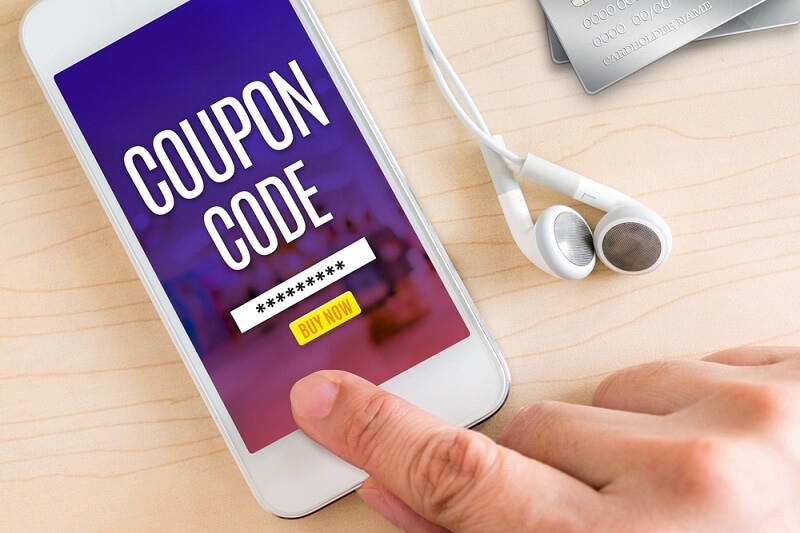How to Find the Best Coupon Codes That Actually Work?

Everyone loves the rush of seeing the total drop at checkout. But nothing kills the vibe like pasting a code… and getting that “invalid” slap. Happens way too often. This guide fixes that. It breaks down how smart shoppers actually find codes that work, stack them the right way, and stop leaving money on the table. It’s practical, a little scrappy, and yes—totally doable.
First things first: what does “works” even mean?
A coupon that “works” does more than apply at checkout. It should:
- Match the cart (brand, category, price threshold, region, sale items, all that fine print).
- Beat your alternatives (cashback, gift card promos, loyalty points).
- Pair well with other promos (free shipping, bundles, rewards).
- Take minimal effort (no 20-minute email maze, no mystery exclusions).
If a code technically applies but forces the shopper to add $30 more stuff to reach a threshold… not a win.
The step-by-step savings system
Think of this as a checklist the shopper can run every time they buy online. It’s fast once it’s muscle memory.
Step 1: Name the buy and set a baseline
They start with clarity: the exact product, the normal price (MRP), and the second-best acceptable pick. They note:
- Retail price from the brand site.
- Typical street price on a big marketplace.
- Any “everyday” retailer discount (10% off with store card, 5% subscribe & save, etc.).
A simple baseline keeps “good deal” honest.
Step 2: Time it, if possible
If the item isn’t urgent, the shopper checks timing patterns. Many brands run predictable cycles:
- New collections? Light deals now, bigger ones in 6–10 weeks.
- End-of-season? Deep cuts on outgoing SKUs.
- Tuesdays/Thursdays often get midweek promos; holiday weekends bring site-wide codes.
Waiting a week can flip a 10% code into 20%. Not always. But often.
Step 3: Start broad with aggregators
This is where the shopper casts a wide net on top coupon code sites, then narrows fast. They skim for:
- Recent timestamps.
- Clear exclusions.
- Comments from real users (“worked 2 hours ago on sale items!”).
They open three likely codes in new tabs. That’s it. No rabbit holes. If none look fresh, they move on.
Step 4: Hunt near the source

Real codes often live close to the retailer:
- Website header, footer, or homepage banners.
- Cart page pop-ups (“extra 15% with email sign-up”).
- SMS/Email list offers (especially “welcome” codes).
- In-app only promos (retailers love channel-exclusive deals).
- Abandoned cart nudges (adding to cart, then waiting a few hours).
They also try search strings like:
- site:retailer.com promo code
- retailer name + newsletter code
- retailer name + student discount
- retailer name + refer a friend
Step 5: Check social and creator links
Many brands feed creators single-use or rotating codes. The shopper looks at the brand’s Instagram/TikTok tags, YouTube video descriptions, or affiliate blogs. If there’s a “creator20” vibe, it’s often stackable on full-price items.
Step 6: Verify quickly (like a pro)
Here’s how to test without wasting time:
- Add the exact target item(s) to cart.
- Apply the code on desktop and mobile app if both exist.
- Switch shipping options—some codes exclude overnight or free ship tiers.
- Try an incognito browser if a code is “first-order only.”
- Change the currency/region if traveling or using VPN (region matters).
The goal is simple: find one code that actually hits. Bonus if it stacks. Sites that maintain verified coupons usually save a few false starts here.
Step 7: Stack the easy wins
Stacking is clean, not chaotic. The playbook:
- Email/SMS welcome + general sitewide code? Sometimes yes. Often not. Try.
- Loyalty points + promo code? Usually fine.
- Cashback portal + coupon? Usually either/or; test both totals.
- Credit card offers (Amex/Chase bank offers) + code? Often yes; they post-credit later.
- Gift card promos (buy $100, get $10 bonus) + code? Great for repeat retailers.
App-only code on top of free shipping? Rare, but sweet when it lands.
Done right, stacking can unlock retailer promo codes for extra savings without getting fancy.
Step 8: Use alerts (but keep inbox sanity)
If the shopper buys from a retailer often, signing up for real-time coupon alerts pays off—especially during launch weeks or seasonal flips. The trick is to filter emails to a “Deals” folder and skim only when purchasing. No doom-scrolling.
Step 9: Don’t forget cashbacks and price drops
Codes aren’t the only lever:
- Price protection on certain cards may refund drops within a window.
- Cashback portals (or credit card portals) sometimes beat a weak code.
- Price-match chat: A quick “I saw this for $X at Y—can you match?” has surprising success.
Step 10: Close the deal (the smart way)
Right before paying, the shopper runs this 60-second closing routine:
- Double-check code + shipping math.
- Revisit portal vs. code—pick the better final.
- If near a threshold (free ship or 20% over $150), adding socks or filler can net out cheaper.
- Ask chat support for a better code. (Polite. Succinct. Works more than folks think.)
- Screenshot the success page and save the order email (for price adjustments later).
The live test: a quick scenario
Let’s say someone’s buying running shoes listed at $140.
- Baseline: Brand site $140, big marketplace $130 after “10% member” perk.
- Aggregators: Finds a 15% code updated yesterday (looks promising) and a 20% that excludes “performance footwear” (nope).
- Near source: The brand’s homepage has “Extra 10% off for app orders.” Good to know.
- Creators: A fitness YouTuber offers “RUN15” for first orders, full price only.
- Verify: RUN15 applies in app on full price—down to $119. Cashbacks show 6% ($8.40), but they conflict with the code. Code wins.
- Stack: Credit card has a $10 back on $75+ spend at this retailer. Nice. Final effective total ≈ $109 after statement credit.
- Close: Chat confirms free returns. Screenshot saved. Done.
That’s a $31+ win. Without drama.
How to spot quality in a code (and avoid time sinks)
Green flags:
- Clear date window and category rules.
- Multiple recent user confirmations.
- Works on both desktop and app (or clearly marked channel-exclusive).
Red flags:
- Vague phrases like “up to 80%” (that’s a sale, not a code).
- Old timestamps, random strings, weird spacing.
- Sites gating codes behind surveys or downloads.
Advanced tactics
- Role-based discounts: Student, teacher, military, first responder—often stackable with non-sitewide promotions.
- Abandoned cart offers: Add items, enter email, close the tab. Wait a few hours. Often nets a 10–15% nudge.
- Referral loops: If a retailer runs “give $10, get $10,” two friends can leapfrog first-order credits.
- Bundles > codes: Some brands give 25% off when three items are bundled. Better than a 15% promo code.
- Subscription math: If cancelable with a click, “subscribe & save” can beat codes. Just calendar a reminder to cancel.
Conclusion
Finding coupon codes that actually work isn’t luck—it’s a repeatable routine. Start with a baseline, check a short list of trusted sources, verify in the cart, and stack responsibly. Keep screenshots. Keep receipts. Keep it simple. The shopper won’t win every time, but with this system, they’ll win most of the time—and spend less without turning saving money into a second job.
And if they want to squeeze just a little more? Stay on the retailer’s list for real-time coupon alerts, prioritize sources that post verified coupons, lean on top coupon code sites, and keep an eye out for retailer promo codes for extra savings. That steady, low-effort rhythm is how everyday buyers start feeling like pros—because they are.
This content was created by AI

